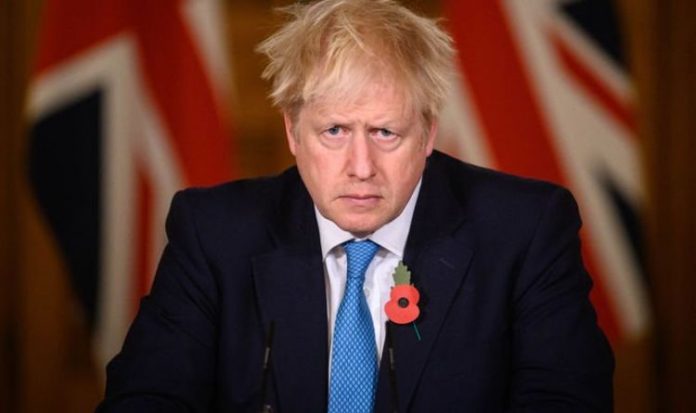The plea came as widespread statistics showed the worst of the surge could be over, with the UK infection rate steady at just above 1.0 yesterday. Meanwhile a study by experts at King’s College London estimated the R rate of infection being passed on is less than 1.0 in some areas, pointing to a coming fall in infections, hospitalisations and deaths. There have been growing calls for No10 to re-evaluate if there is any need for the whole country to be hit by the strictest rules since spring.
But Boris Johnson’s spokesman insisted the national shutdown would stay until December 2, when a tiered system will be put in place for the run-up to Christmas. He added: “The lockdown is for four weeks to December 2. As we have said, the trend of hospital admissions is going up.”
Department of Health figures yesterday confirmed 355 more people have died of Covid-19 while 23,287 tested positive, marking a five per cent fall from cases on the previous Friday in a further sign that infections have stopped rising.
The reproduction rate, known as the R number, is between 1.1 and 1.3. The worst-hit areas are the East of England, between 1.1 and 1.4, and in the Southeast and South-west – 1.2 to 1.4. In the North-east, Yorkshire and the North-west the R is hovering above 1.0, while it is 1.1 to 1.3 in both London and the Midlands.
Ruth Studley, head of analysis for the Covid-19 infection survey, said: “We are seeing infections slow across England and Wales but they are still increasing. Within England, every region apart from the North-east has shown increased levels of infection.
“The level of infection in young adults and older teenagers appears to have levelled off recently.
“However, they continue to be the most likely to be infected despite increases in all other age groups,” she added. The separate Covid Symptom Study, run by health tech firm Zoe and King’s College London, showed a decline in cases. Project leader Prof Tim Spector is convinced the peak of the second wave has passed.
He said: “Over the past week cases are heading in the right direction.” The brightening picture suggests that No 10’s three-tiered approach was pushing down the disease before general lockdown began.”
Rates also fell in areas which were not under Tier 2 or 3 limits, suggesting that national restrictions were helping.
Economists and politicians have criticised the decision to impose nationwide rules as hasty and unnecessary. Up to 100 Tories could rebel against the Government if lockdown is extended next month.
Tory Desmond Swayne said: “We appear to have rolled over with not so much as a complaint despite the certainty of economic damage, unemployment and the long-term consequences of repaying fantastic amounts of money.”
Downing Street admitted yesterday there were mistakes in virus forecasts used by the PM to justify the fresh lockdown but insisted that without action the first wave of Covid deaths would have been overtaken.
Slides shown at the press conference by chief scientific adviser Sir Patrick Vallance predicting Covid deaths could hit 1,400 a day by early December have now been revised down.
The graph, based on forecasts by the Scientific Pandemic Influenza Group on Modelling, projected a top-end range of more than 1,400 deaths a day by December 8 – well above the first-wave peak of almost 1,000. On Tuesday that was quietly reissued, revised down to just more than 1,000 deaths daily.
Another slide forecasting that hospital admissions would reach nearly 9,000 has been changed to just top 6,000 a day. The central figure for daily admissions stayed at just more than 4,000 a day, with daily deaths steady at less than 800.
The spokesman said the Government agreed there had been an error. On the revised graphs, he said: “There was a mistake in plotting the confidence intervals, which are the blue shaded areas, which we corrected as soon as identified, but there was no error in the underlying analysis.”
Asked if this could hit public confidence, he said: “The data still shows, and the consensus remains, that without action we would breach the first wave of hospital admissions and deaths in a matter of weeks.
“I would also point back to what the Prime Minister said about our desire to present data in as clear a way as can be possible.”







